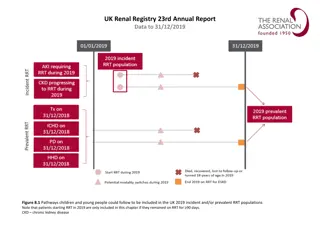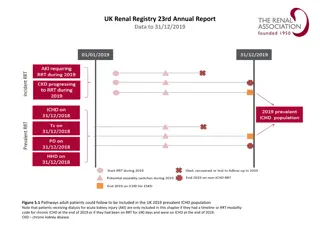
Understanding Lelantus-MW and Linkability Issues
Delve into the hybrid symbiosis of Lelantus-MW, the innovative anonymity features it offers, and the challenges it faces with linkability. Explore possible laundry solutions and the work of Aram Jivanyan on Lelantus, all in the context of cutting-edge protocols for privacy and security.
Download Presentation

Please find below an Image/Link to download the presentation.
The content on the website is provided AS IS for your information and personal use only. It may not be sold, licensed, or shared on other websites without obtaining consent from the author. If you encounter any issues during the download, it is possible that the publisher has removed the file from their server.
You are allowed to download the files provided on this website for personal or commercial use, subject to the condition that they are used lawfully. All files are the property of their respective owners.
The content on the website is provided AS IS for your information and personal use only. It may not be sold, licensed, or shared on other websites without obtaining consent from the author.
E N D
Presentation Transcript
Lelantus-MW The hybrid symbiosis
Brief overview of MW UTXO as Pedersen commitment ? = ? + ? ? Transactions: No scripts, no transactions in the classical sense Balance-to-zero principle Merged non-interactively! Cut-through Block is one big transaction The whole blockchain history is one huge transaction Spent outputs are removed
So far so good Great anonymity out-of-the-box All transactions are confidential Values are blinded (concealed) No addresses, accounts, user tokens or etc. Transaction graph is obfuscated Great scalability Spent outputs are completely erased Only kernels remain (~100 bytes per tx) not really What could be wrong with MW?
Linkability The Achilles heel of MW! Cut-through doesn t improve anonymity! Optimistically up to ~1000 transactions in a block are mixed But not all blocks are big! Transaction broadcast is non-trivial Not good enough against active attacker
Possible laundry solutions Current solution: Modified Dandelion with transaction join during stem phase Decoy inputs/outputs (UTXOs with zero value) Other poor man s solutions: Coinjoin Trusted payment hubs Drastic solutions: zk-SNARKs, zk-STARKs Bulletproofs (for arbitrary circuit)
Lelantus Work of Aram Jivanyan, Zcoin's cryptographer Disclaimer: Our design and implementation are based on the publicly-available Lelantus scientific paper. All our code was developed from scratch based on this paper alone. Natural ally: Designed as an add-on (laundry) to any protocol Same cryptographic assumptions (DLP, no trusted setup) Similar constructs: Pedersen commitments, rangeproofs, vector commitments Based on the One-out-of-many Sigma-protocol by Jens Groth
1-out-of N Sigma protocol Sophisticated ring signature Logarithmic size! Practical for large anonymity sets Nearly linear verification time Batch verification is possible 1 sec for anonymity set of 65536 elements Only 15 msec for each additional proof for the same anonymity set Easily parallelized Precomputations are effective, but dramatically inflate the storage size
Brief overview of Lelantus Lelantus UTXO ? = ? + ? ? + ? ? ? serial number, derived from pubkey ??. Spend transaction ?? is revealed, and the whole transaction is signed by appropriate secret key ? ? is subtracted (methodically) from the commitments in the pool Modified Sigma-protocol in terms of ?,? generators. The net value extracted from the shielded pool is revealed Separate proof proves its correctness For this original Sigma-protocol is significantly modified
Lelantus-MW Why not just use Lelantus as indented for Zcoin? Values should not be revealed Keep cut-through for the MW part Our (Beam) modified version Reveal Pedersen commitments instead of values Reveal commitment for each individual spent UTXO Would be a bad idea if values were revealed Separate spend proof can be omitted! Keep balance-to-zero principle Keep MW-style transactions! MW/Lelantus inputs/outputs can come in any combination
Lelantus-MW primitives Input Pedersen commitment MW: must be in the current UTXO set Lelantus: Spend proof is attached Output Pedersen commitment MW: Bulletproof (rangeproof) Lelantus: double-blinded bulletproof Kernel Pedersen commitment MW: Schnorr s signature Lelantus: generalized Schnorr s signature (in terms of ?,? generators)
Spend proof Pedersen commitment ? = ? + ? ? Value ? is the same as of the spent UTXO Blinding factor different Generalized Schnorr s signature to prove the above ? serial number, derived from the revealed pubkey ?? (? + ? ?) is subtracted (methodically) from the commitments in the shielded pool Original Sigma-protocol proves the knowledge of an element in the pool, in terms of ? generator only. The witness data is the blinding factor difference Separate balance proof is not needed!
Lelantus-MW implications Pros: Linkability break! One-side payments Cons Obviously no cut-through for shielded pool Verification time is dramatically higher Most of transactions should remain in MW Better w.r.t. scalability Better w.r.t. anonymity as well! Lelantus should be used between meaningful entities Consensus rules must restrict the overall anonymity set referenced by a block and limit the number of spend proofs. This should create a fee market
Conclusions So, problem solved? Not completely! Dust attack is a threat Proper strategy must separate clean UTXOs from others Compared to Zcash Great technology, but NOT immune either! Unlimited anonymity set is a big advantage, but: Probability distribution is not uniform! Recent outputs are more likely to be spent Only hundreds of shielded outputs per day Metadata leakage (correlated values, number of JoinSplits, etc.) Breaking linkability is HARD! ANY induced (stereotypic) behavior in an attack target! Theoretically with enough experiments the attacker can reach arbitrary precision The goal is to make such attacks infeasible in practice





















